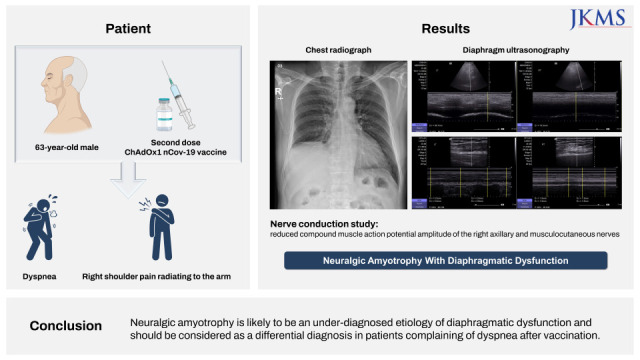1. Li Q, Guan X, Wu P, Wang X, Zhou L, Tong Y, et al. Early transmission dynamics in Wuhan, China, of novel coronavirus-infected pneumonia. N Engl J Med. 2020; 382(13):1199–1207. PMID:
31995857.

2. Falsey AR, Sobieszczyk ME, Hirsch I, Sproule S, Robb ML, Corey L, et al. Phase 3 safety and efficacy of AZD1222 (ChAdOx1 nCoV-19) COVID-19 vaccine. N Engl J Med. 2021; 385(25):2348–2360. PMID:
34587382.

3. Polack FP, Thomas SJ, Kitchin N, Absalon J, Gurtman A, Lockhart S, et al. Safety and efficacy of the BNT162b2 mRNA COVID-19 vaccine. N Engl J Med. 2020; 383(27):2603–2615. PMID:
33301246.

4. Baden LR, El Sahly HM, Essink B, Kotloff K, Frey S, Novak R, et al. Efficacy and safety of the mRNA-1273 SARS-CoV-2 vaccine. N Engl J Med. 2021; 384(5):403–416. PMID:
33378609.

5. Sadoff J, Gray G, Vandebosch A, Cárdenas V, Shukarev G, Grinsztejn B, et al. Safety and efficacy of single-dose Ad26.COV2.S vaccine against COVID-19. N Engl J Med. 2021; 384(23):2187–2201. PMID:
33882225.

6. Son SA, Kim YJ, Lim SY, Kim HB. Bilateral vocal fold paralysis after COVID-19 mRNA vaccination: a case report. J Korean Med Sci. 2022; 37(25):e201. PMID:
35762144.

7. Kim JG, Kim SY, Oh HS, Jo DH. Parsonage-Turner syndrome following typhoid vaccination. Yonsei Med J. 2021; 62(9):868–871. PMID:
34427074.

8. Kim KK. Acute brachial neuropathy--electrophysiological study and clinical profile. J Korean Med Sci. 1996; 11(2):158–164. PMID:
8835764.
9. Van Eijk JJ, Groothuis JT, Van Alfen N. Neuralgic amyotrophy: an update on diagnosis, pathophysiology, and treatment. Muscle Nerve. 2016; 53(3):337–350. PMID:
26662794.

10. Crespo Burillo JA, Loriente Martínez C, García Arguedas C, Mora Pueyo FJ. Amyotrophic neuralgia secondary to Vaxzevri (AstraZeneca) COVID-19 vaccine. Neurologia (Engl Ed). 2021; 36(7):571–572. PMID:
34330677.

11. Lahrmann H, Grisold W, Authier FJ, Zifko UA. Neuralgic amyotrophy with phrenic nerve involvement. Muscle Nerve. 1999; 22(4):437–442. PMID:
10204776.

12. Blanco-Aparicio M, Montero-Martínez C, Couto-Fernández D, Pernas B, Fernández-Marrube M, Verea-Hernando H. Unilateral painful diaphragm paralysis as the only sign of amyotrophic neuralgia. Arch Bronconeumol. 2010; 46(7):390–392. PMID:
19879033.

13. McEnery T, Walsh R, Burke C, McGowan A, Faul J, Cormican L. Phrenic nerve palsy secondary to Parsonage-Turner syndrome: a diagnosis commonly overlooked. Lung. 2017; 195(2):173–177. PMID:
28138789.

14. van Alfen N, Doorduin J, van Rosmalen MH, van Eijk JJ, Heijdra Y, Boon AJ, et al. Phrenic neuropathy and diaphragm dysfunction in neuralgic amyotrophy. Neurology. 2018; 91(9):e843–e849. PMID:
30054437.

15. Mahajan S, Zhang F, Mahajan A, Zimnowodzki S. Parsonage Turner syndrome after COVID-19 vaccination. Muscle Nerve. 2021; 64(1):E3–E4. PMID:
33890680.

16. Coffman JR, Randolph AC, Somerson JS. Parsonage-Turner syndrome after SARS-CoV-2 BNT162b2 vaccine: a case report. JBJS Case Connect. 2021; 11(3):e21.00370.
17. Tsairis P, Dyck PJ, Mulder DW. Natural history of brachial plexus neuropathy. Report on 99 patients. Arch Neurol. 1972; 27(2):109–117. PMID:
4339239.
18. Hughes PD, Polkey MI, Moxham J, Green M. Long-term recovery of diaphragm strength in neuralgic amyotrophy. Eur Respir J. 1999; 13(2):379–384. PMID:
10065685.

19. Podnar S. Idiopathic phrenic neuropathies: a case series and review of the literature. Muscle Nerve. 2015; 52(6):986–992. PMID:
25846409.



